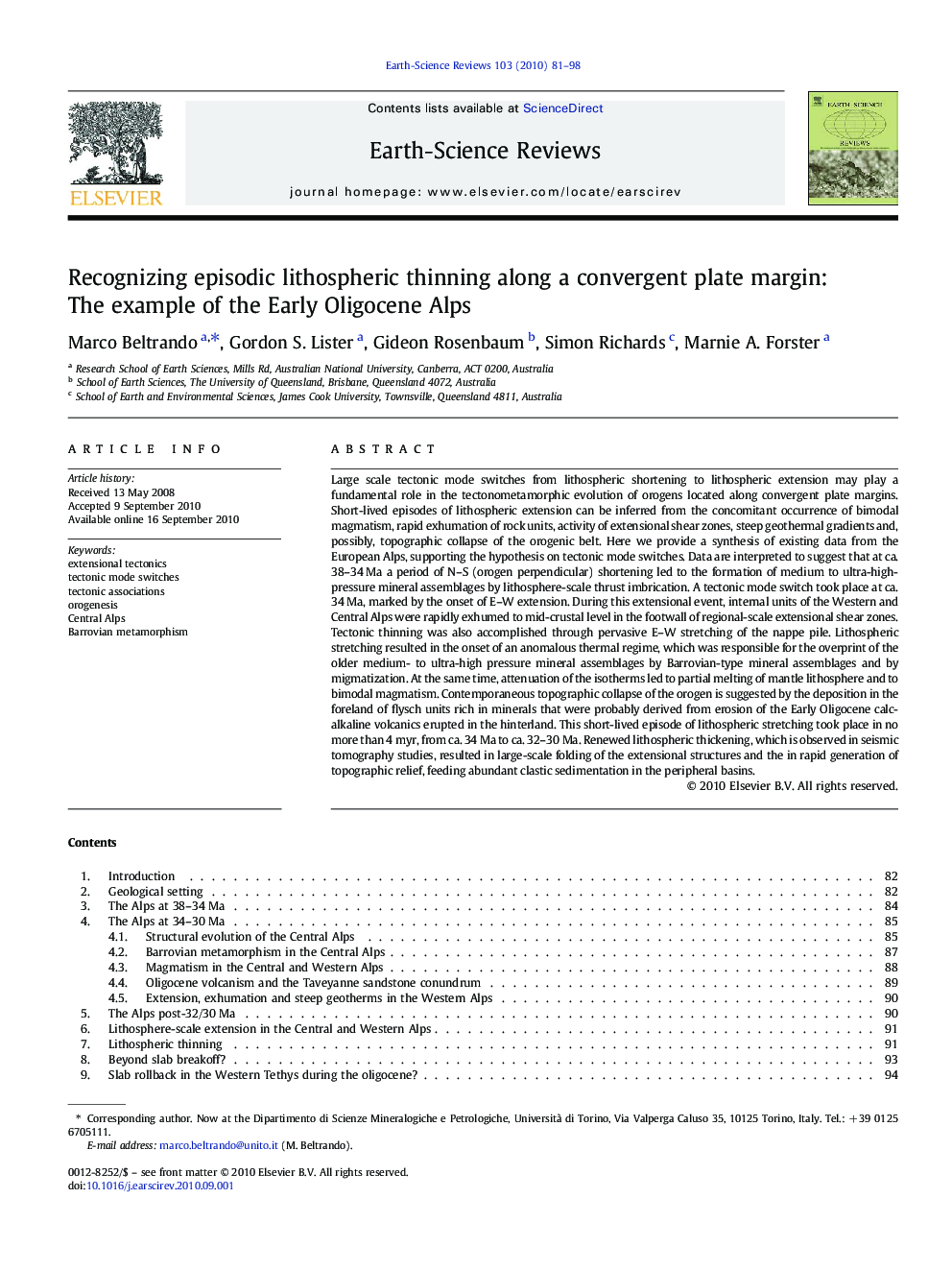| کد مقاله | کد نشریه | سال انتشار | مقاله انگلیسی | نسخه تمام متن |
|---|---|---|---|---|
| 4726073 | 1640008 | 2010 | 18 صفحه PDF | دانلود رایگان |

Large scale tectonic mode switches from lithospheric shortening to lithospheric extension may play a fundamental role in the tectonometamorphic evolution of orogens located along convergent plate margins. Short-lived episodes of lithospheric extension can be inferred from the concomitant occurrence of bimodal magmatism, rapid exhumation of rock units, activity of extensional shear zones, steep geothermal gradients and, possibly, topographic collapse of the orogenic belt. Here we provide a synthesis of existing data from the European Alps, supporting the hypothesis on tectonic mode switches. Data are interpreted to suggest that at ca. 38–34 Ma a period of N–S (orogen perpendicular) shortening led to the formation of medium to ultra-high-pressure mineral assemblages by lithosphere-scale thrust imbrication. A tectonic mode switch took place at ca. 34 Ma, marked by the onset of E–W extension. During this extensional event, internal units of the Western and Central Alps were rapidly exhumed to mid-crustal level in the footwall of regional-scale extensional shear zones. Tectonic thinning was also accomplished through pervasive E–W stretching of the nappe pile. Lithospheric stretching resulted in the onset of an anomalous thermal regime, which was responsible for the overprint of the older medium- to ultra-high pressure mineral assemblages by Barrovian-type mineral assemblages and by migmatization. At the same time, attenuation of the isotherms led to partial melting of mantle lithosphere and to bimodal magmatism. Contemporaneous topographic collapse of the orogen is suggested by the deposition in the foreland of flysch units rich in minerals that were probably derived from erosion of the Early Oligocene calc-alkaline volcanics erupted in the hinterland. This short-lived episode of lithospheric stretching took place in no more than 4 myr, from ca. 34 Ma to ca. 32–30 Ma. Renewed lithospheric thickening, which is observed in seismic tomography studies, resulted in large-scale folding of the extensional structures and the in rapid generation of topographic relief, feeding abundant clastic sedimentation in the peripheral basins.
Journal: Earth-Science Reviews - Volume 103, Issues 3–4, December 2010, Pages 81–98